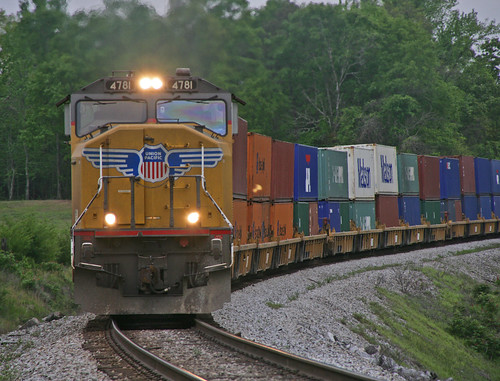Environmentally-friendly transportation: The American Railroad

Image by AGRR 4059
Do you know that one of the most environmentally-friendly ways to transport goods is by freight rail? According to the EPA, for every ton-mile of freight that is transported by rail instead of highway, greenhouse emissions are being cut by two-thirds. That’s a pretty big figure…and it makes me wonder why there are so many trucks on the roads if transportation by rail is better for the environment.
So in order to get some specifics for you, I used the Association of American Railroad’s Carbon Calculator to see how much carbon dioxide emission would be prevented by using freight rail instead of trucks. The calculator allows you to “haul some freight” and see for yourself how freight trains have less impact on greenhouse emissions than trucks.
I chose for the train to have 10 train cars and go from Long Beach, CA to Denver, CO carrying a load of consumer goods. According to their calculator, 31 tons of carbon dioxide would be saved by using freight rail instead of truck for that shipment. They also provided an additional fact that it would take 727 tree seedlings 10 years to remove that same amount of carbon dioxide from the environment.
Wow! Looks like the trucking industry has their work cut out for them. They will have to step up their Clean Truck Programs, use of effective diesel fuel additives, upgrading to more fuel efficient trucks, etc.
At least they made a good step forward when, the American Trucking Association asked Congress to approve environmental initiatives they say “are expected to cut fuel consumption by 86 billion gallons and reduce all vehicles’ carbon footprint by almost a billion tons over the next 10 years.”
Now, as far as I’m concerned, anything these industries can do to help lower emissions is a good step forward. But my hat goes off to the American Railroads for their great accomplishments towards becoming one of the most environmentally-friendly modes of transporting goods.

Post a comment